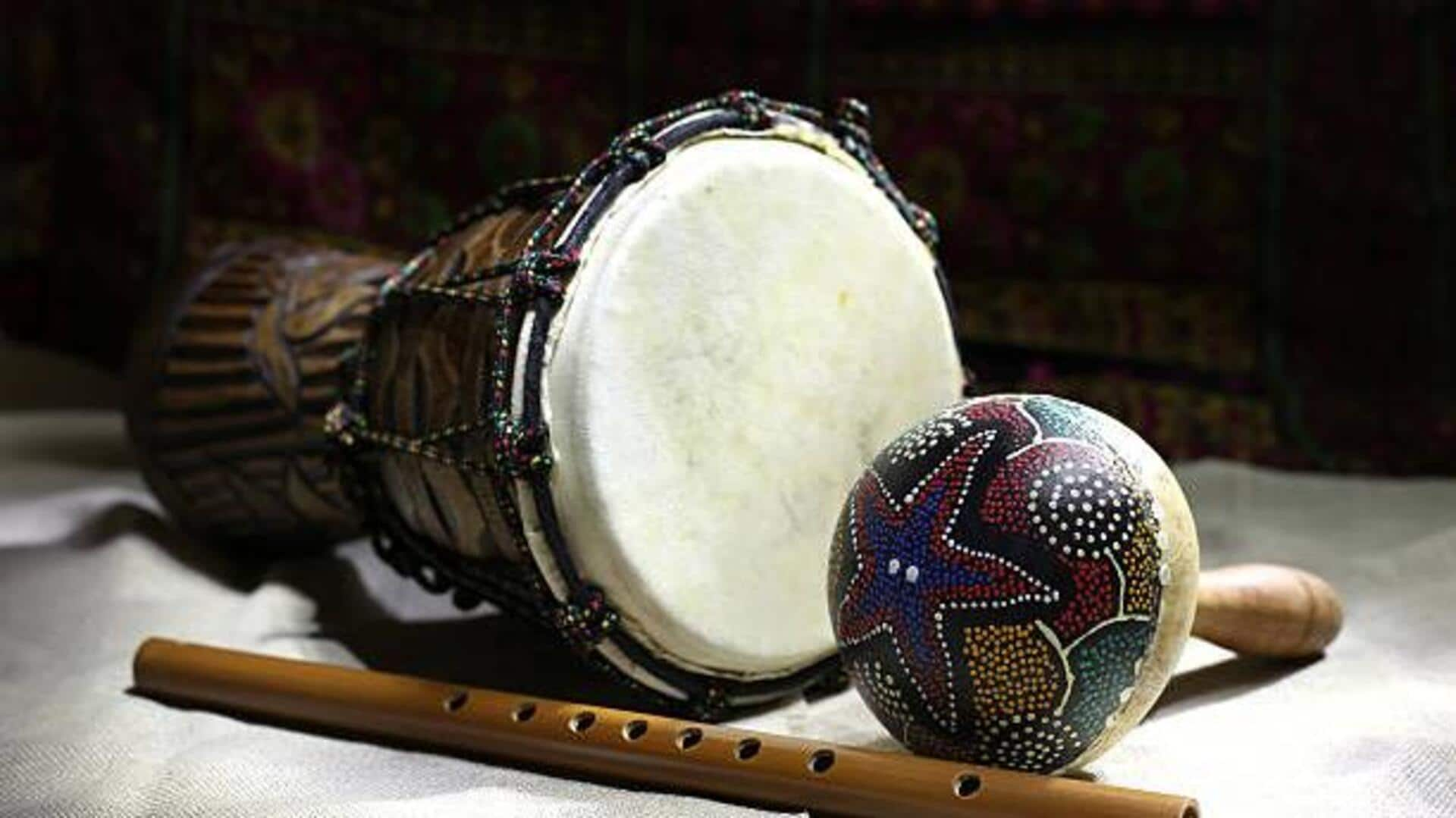
Enhancing cheek muscle tone with African instruments
What's the story
Playing musical instruments, particularly wind instruments, is a surprisingly beneficial method for toning facial muscles. This article delves into the use of traditional African blowing instruments as a fun and unique way to improve cheek muscle tone. These instruments create beautiful sounds, but the real magic lies in the breath control and muscle engagement required to play them - it's like a gym session for your face!
Breath control
Discover the djembe's breath control techniques
The djembe, while primarily a drum, provides a method that can benefit wind instrument players in breath control. By using circular breathing, you inhale through your nose while simultaneously exhaling through your mouth using your cheeks to push the air out. Practicing this technique without the instrument first can improve your ability to sustain a constant airflow when playing wind instruments, and it also strengthens the cheek muscles.
Prolonged notes
Mastering the kudu horn's prolonged notes
The Kudu horn, crafted from the horn of the Greater Kudu antelope, is known for its deep and resonant sounds. Sustaining long notes on the Kudu horn demands continuous breath control and cheek muscle involvement to preserve pitch and volume. By regularly practicing on the Kudu horn, one can significantly strengthen their cheek muscles due to the extended tension involved.
Vibrato technique
The flute's vibrato technique for cheek muscles
African flutes frequently utilize vibrato, a subtle pitch modulation achieved through diaphragm-controlled air pressure changes, further refined by facial muscle engagement, including the cheeks. Mastering vibrato on an African flute not only enhances musical expressiveness but also serves as a beneficial cheek muscle toning exercise through the repeated contraction and relaxation involved.
Rhythmic breathing
Utilizing talking drum messages for rhythmic breathing
The Talking Drum is a unique instrument that imitates human speech through its ability to produce a wide range of pitches, which are manipulated by the player's underarm pressure and striking technique. By practicing its speaking rhythms aloud (which requires rhythmic breathing), you can indirectly tone your facial muscles. This is because the controlled breathing used in this exercise causes a slight tensing in your cheeks.
Dynamic range
Engaging with Algaita's dynamic range
The algaita is a double-reed woodwind instrument known for its wide dynamic range requiring powerful breath control from soft whispers to booming blasts. This dynamic play demands acute engagement of facial, including cheek muscles, to modulate airflow precisely. Regular practice on such instruments that require varying degrees of muscular engagement can lead to noticeable improvements in cheek muscle tone over time due to adaptive resistance training principles applied musically.